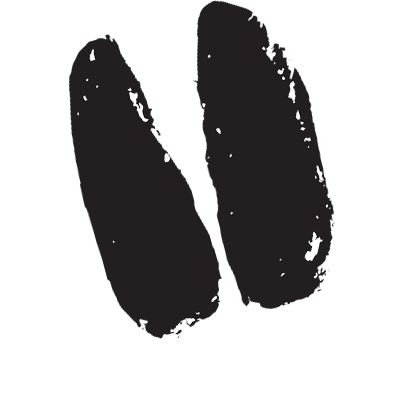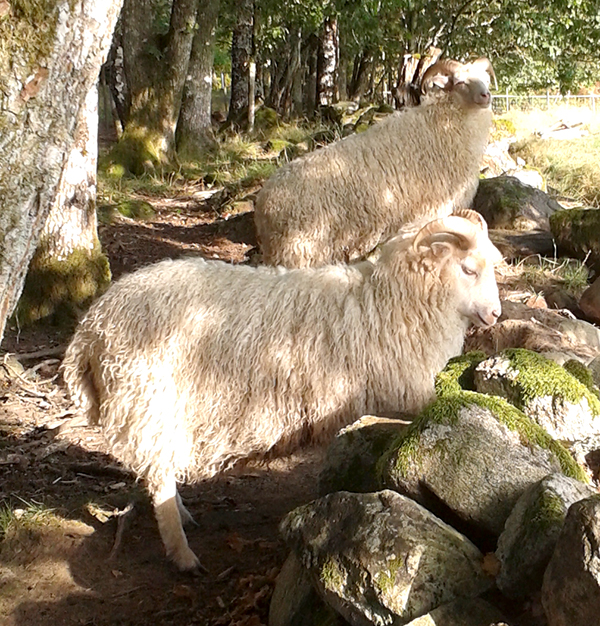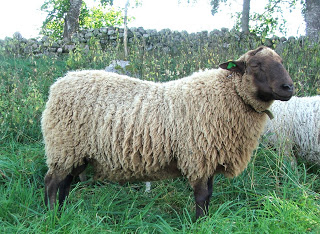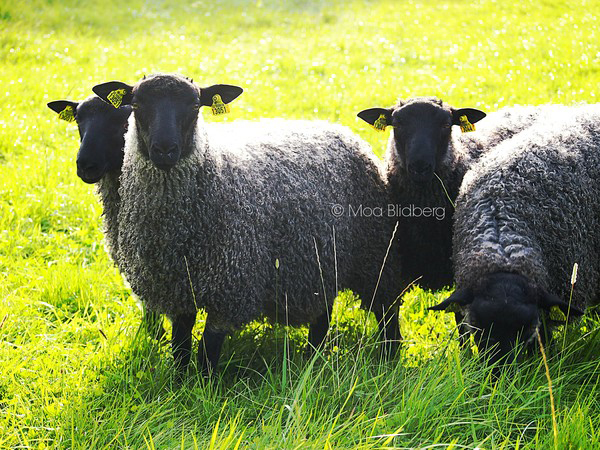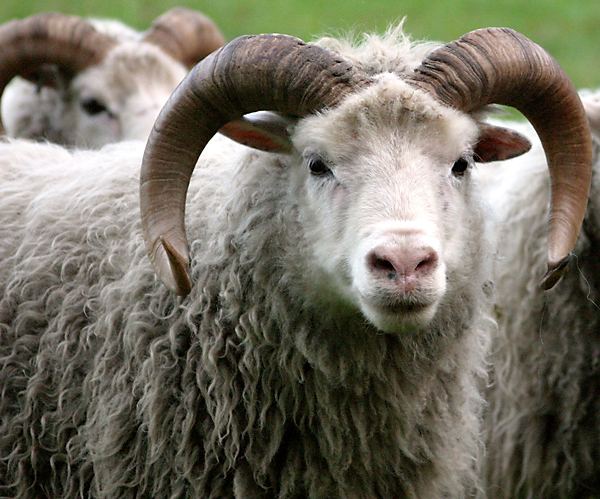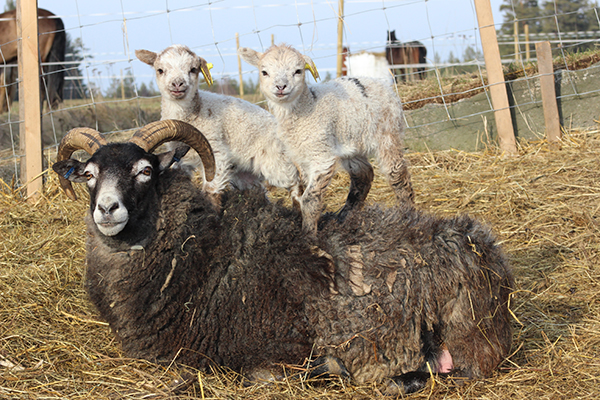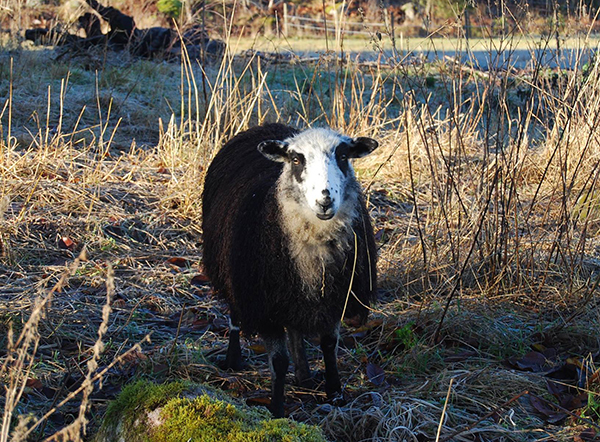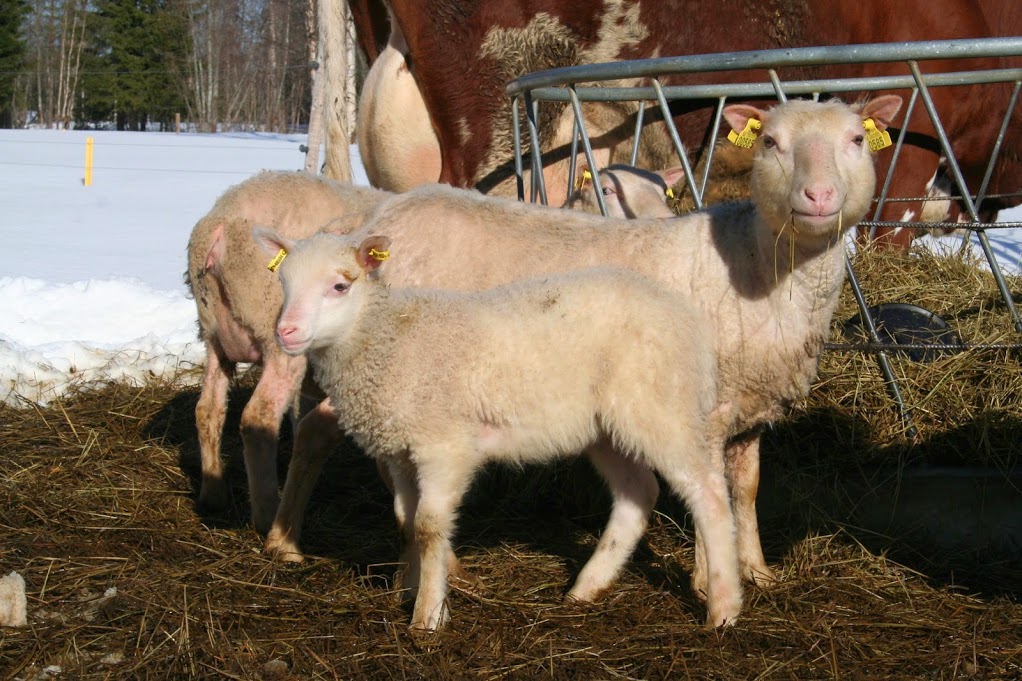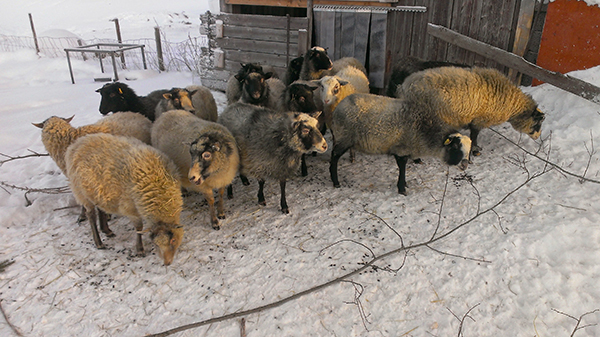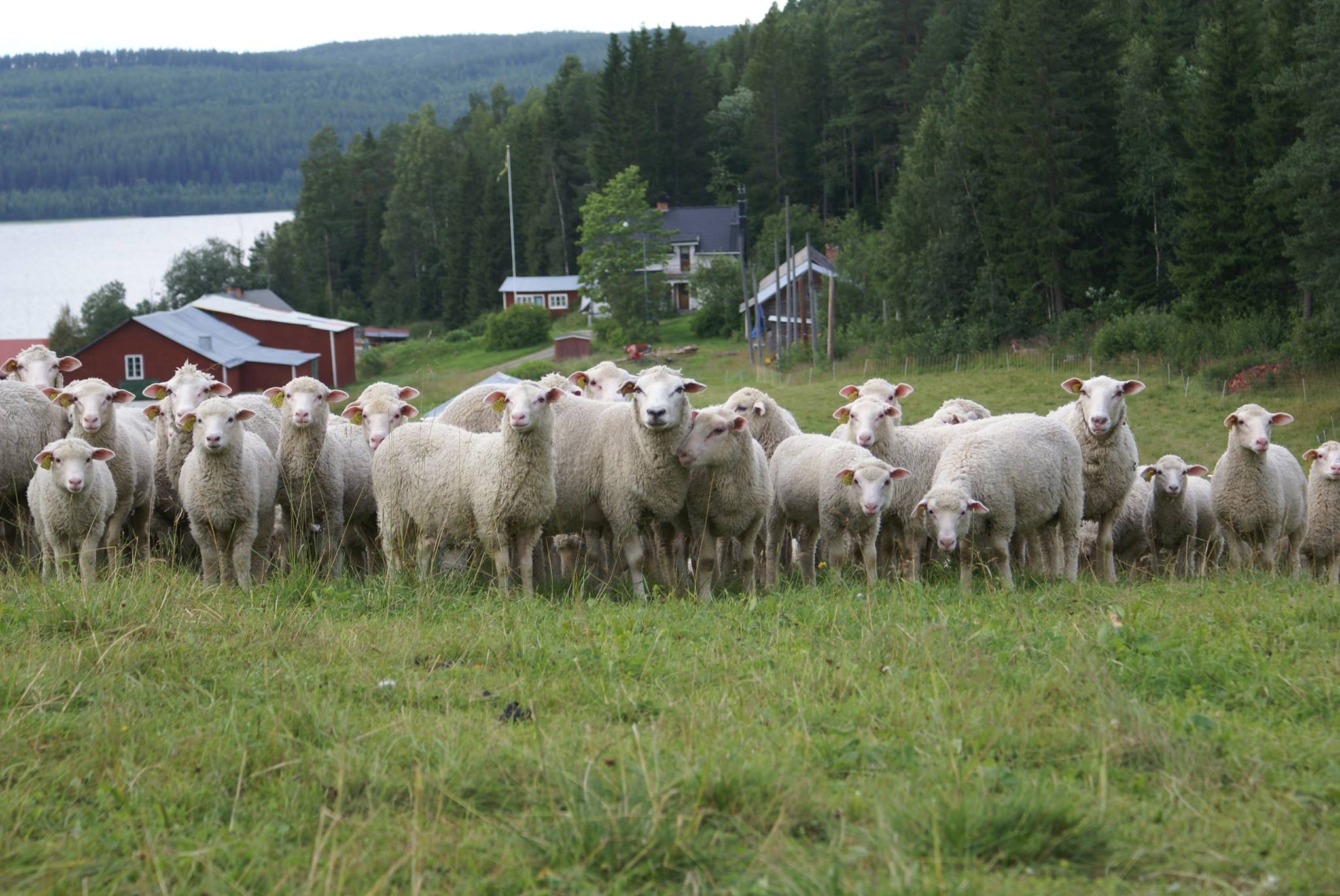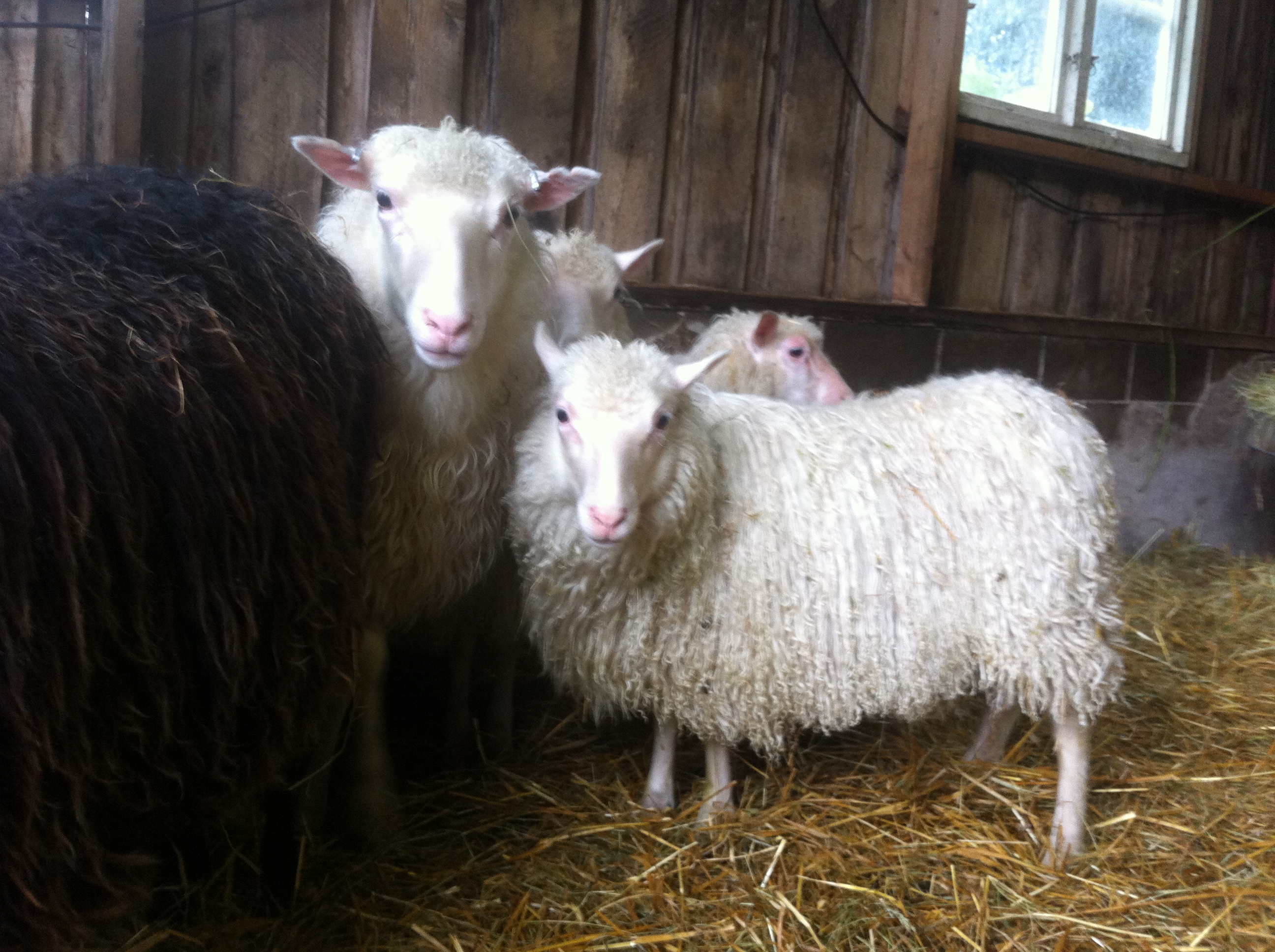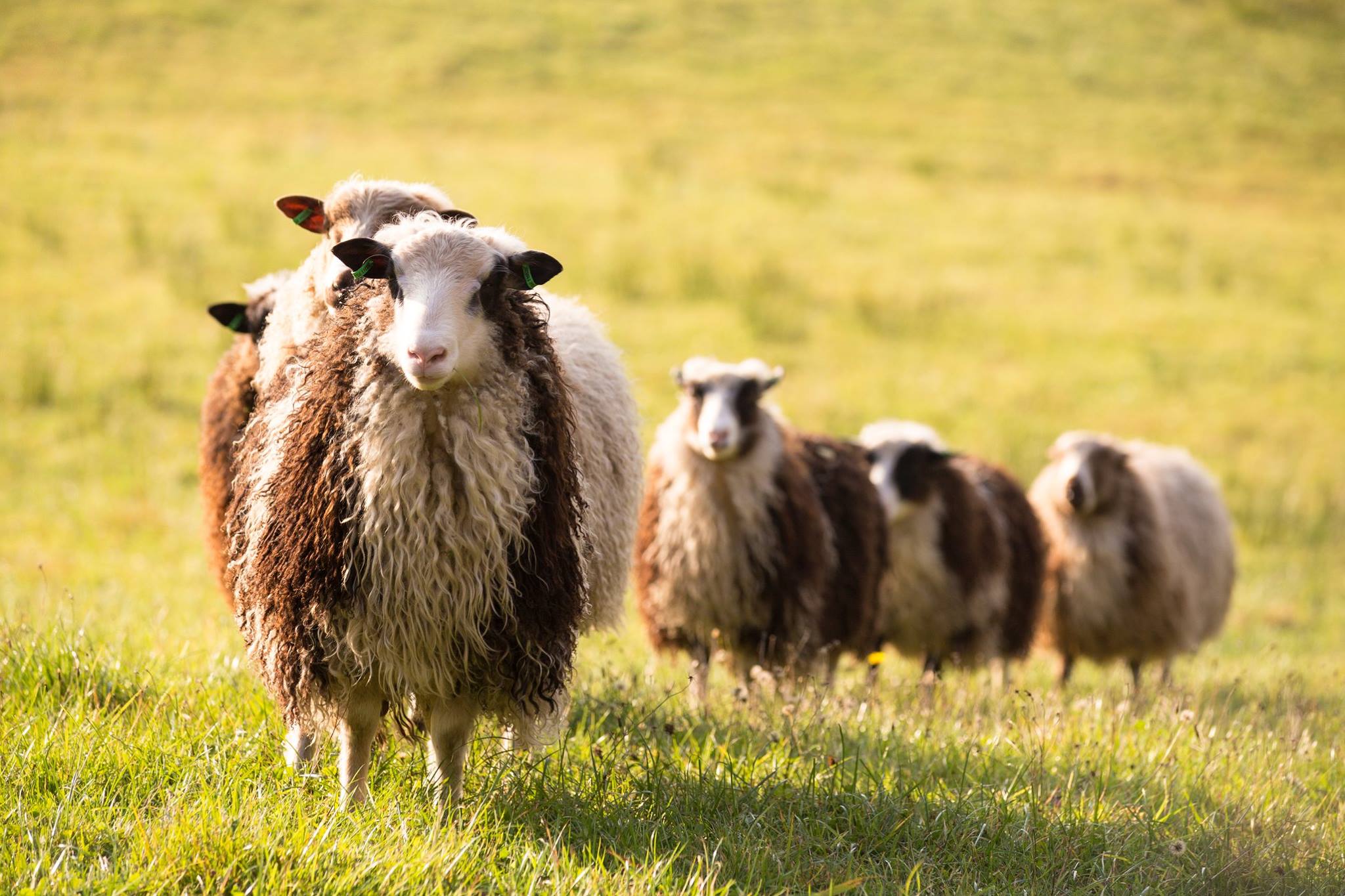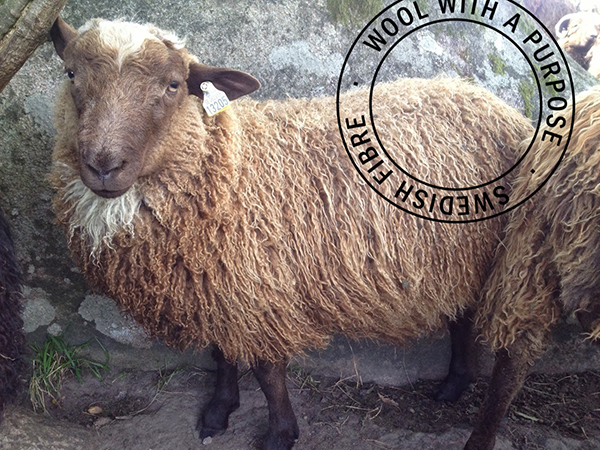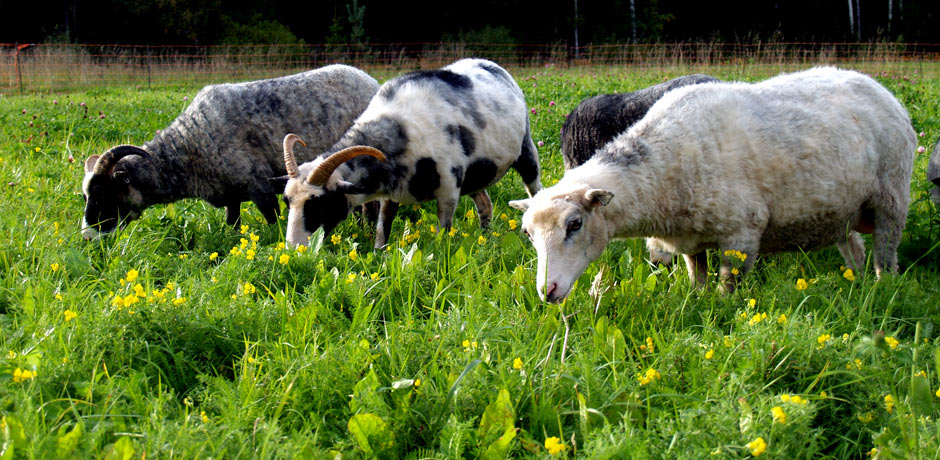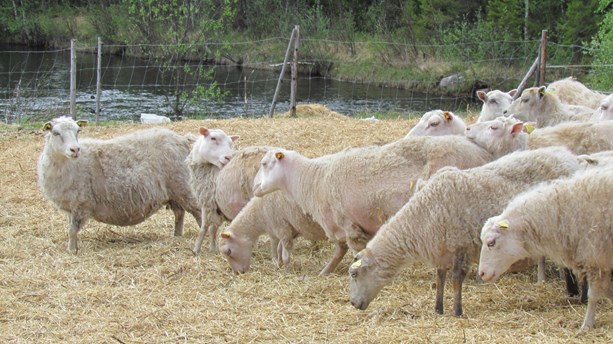With the start of industrialization in early 1900’s, demands on sheep and its wool changed. The multi-purpose animals that cleared the land, provided meat and wool for both clothes and rugs, were set aside in favor of the larger modern breeds. Mills sought soft, uniform wool and the food industry wanted larger, meatier bodies. Even if some Swedish breeds today have gotten closer to meeting those demands, none of them did at the time.
Most of the Swedish sheep breeds are small creatures protected with a thick, dual coated fleece that varies widely as to wool types and structure. Looking at the demands of the early 1900’s – not to speak of today’s industry, you could say that those sheep are everything the industry doesn’t want. At the same time, they’re everything a small-scale farmer and a hand spinner could ever wish for.
Those hardy, often very healthy breeds, are the perfect land clearers. They’re particularly fond of leaf and bark, and sometimes you can see a ewe standing on her back legs eating leaves from a high tree branch. They also produce the kind of wool that gives you endless opportunities to experiment. Every single fleece is unique. Though it’s true that many of these breeds are dual coated and have wool with great attitude, you will also find fleeces with the softest and finest of wools – quite often in the same fleece.
Each and every breed has it’s own history. There are success stories like for the Gotland sheep, a modern breed developed in 1920’s known for its shiny long locks, that produce both good meat bodies and tremendous pelts, a breed that has been spread to UK, US, Australia and New Zealand. But there’s also the Fjällnäs sheep, a breed who's origin is from the very north of Sweden that has decreased in numbers lately and today struggles for survival with less than 50 individual sheep left.
My passion for knitting and wool contributed to making a spinner out of me. After moving to Sweden, I encountered a friend's passion for her Swedish sheep and their wool. I was saddened by their predicament, so when I got the opportunity to share the wool of these delightful Swedish sheep with you, I grabbed it. I now provide Swedish wool to hand spinners and crafters all over the world. These breeds need your attention.
To be able to supply you with the best fleeces, I work closely with my suppliers. That also means that, in some cases, I will be able to provide you the name or ID number of the sheep, along with the information of the farm that delivered the wool. Most of my suppliers run small scale farms, a few are professional breeders, but most have their sheep as a hobby. What ties them all together is the fact that all of them love their sheep and think they have the best breed there ever.
This is no mainstream wool; this is wool with a purpose.
Sandy Zetterlund, Owner of Swedish Fibre

